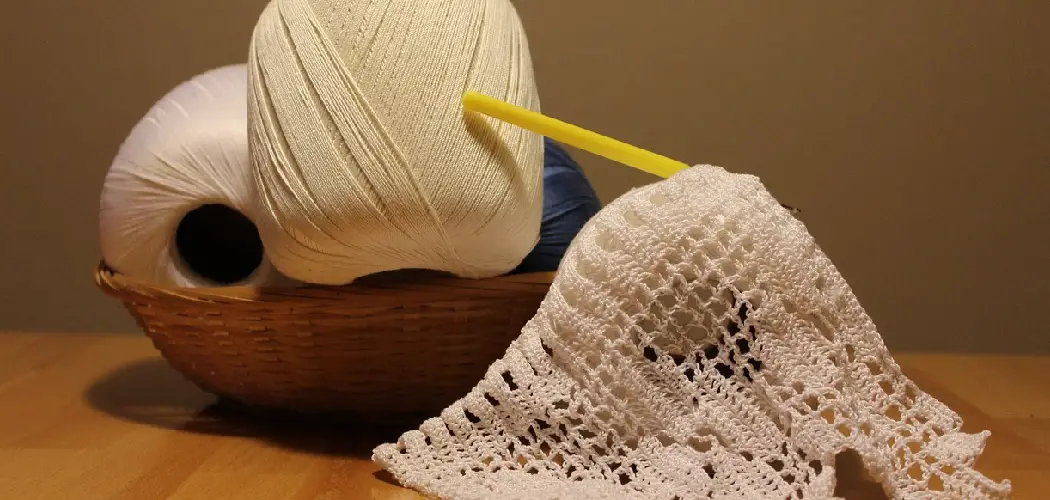Crocheting is a fun and creative hobby that many people enjoy. It involves creating beautiful pieces using yarn and a crochet hook. One of the most commonly used techniques in crocheting is the yarn over stitch, also known as “yo”. This simple yet essential technique creates an extra loop on your hook, allowing you to create various crochet stitches such as single crochet, double crochet, and treble crochet.

The main advantage of crocheting yarn over is that it allows you to produce a variety of different stitches and textures in your crocheted items. By simply wrapping the yarn over the hook before completing each stitch, you can create lacy patterns, ridges, and other intricate designs. You can find step-by-step guidelines on how to crochet yarn over in this blog article.
Step-by-step Instructions for How to Crochet Yarn Over
Step 1: Gather Materials
To begin, gather all the necessary materials for crocheting yarn over:
- Yarn of your choice
- Crochet hook appropriate for your yarn weight
- Scissors
- Stitch markers (optional)
- Tapestry needle (optional)
Step 2: Start a Slip Knot
Take one end of your yarn and create a slip knot. This will serve as your first stitch on the crochet hook. Hold the crochet hook in your dominant hand and the yarn in your non-dominant hand. Make sure to leave a tail of yarn about 6 inches long.
Step 3: Insert the Hook into the Slip Knot
Insert the hook into the slip knot from front to back. This will create a loop on the hook. Bring the yarn over the hook from back to front. This is known as “yarn over” and it will create a second loop on the hook.
Step 4: Pull Through
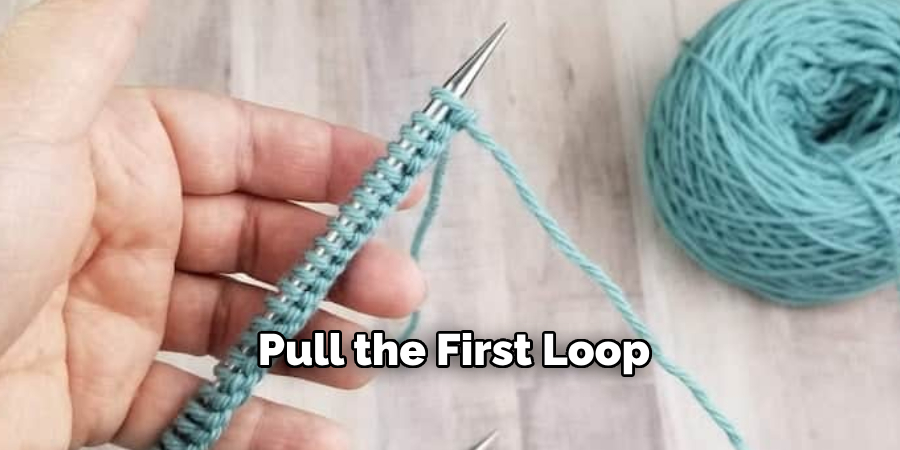
With both loops still on the hook, pull the first loop (the one closest to the hook) over the second loop. This is called a “single crochet” stitch. To continue crocheting yarn over, simply repeat steps 5 and 6 until you reach the desired number of stitches for your project. Remember to always keep two loops on the hook before pulling through.
Step 5: Use Stitch Markers (Optional)
If you are working on a pattern that requires specific stitch counts, use stitch markers to keep track of your stitches. Place the marker in between each stitch and move it up as you work. Crocheting yarn over may feel awkward at first but with practice, it will become second nature. Don’t be afraid to pull out your work and start over if you make a mistake.
Step 6: End Off
To secure your stitches, end off by cutting the yarn leaving a tail of about 6 inches. Pull the tail through the last loop on the hook and tighten to create a knot. Weave in any remaining ends with a tapestry needle.
By following these simple steps, you can easily learn to crochet yarn over and use it in various patterns to create beautiful crocheted projects. Remember to have patience and practice regularly to improve your skills.
Safety Tips for How to Crochet Yarn Over

- Keep your hands and fingers safe from piercing and sharp tools like crochet hooks.
- Always use a safety pin to hold the yarn in place while crocheting, so it doesn’t slip out of your hand.
- Make sure to choose the right size hook for your yarn – using too small of a hook can cause the yarn to become too tight and difficult to work with.
- Take regular breaks to stretch your hands and fingers to prevent fatigue and strain. Crocheting can be repetitive, so it’s important to give your hands a rest.
- Use good lighting while crocheting to avoid eye strain. This is especially important when working with dark or fine yarns.
- Keep all sharp tools, such as scissors and needles, out of reach of children and pets.
- When working with multiple colors, be sure to weave in your yarn ends properly to prevent them from unraveling and causing a safety hazard.
In addition to these safety tips, there are also precautions you can take to ensure the safety of those around you while crocheting. If you have small children or pets in your home, make sure to keep your work area out of their reach.
Common Mistakes for Crocheting Yarn Over
1. Not Paying Attention to the Yarn Over Direction
When crocheting, it’s easy to overlook the direction of your yarn over. This may seem like a small detail, but it can greatly affect the outcome of your project. If you don’t pay attention to the direction when making a stitch, your work may end up with twists or uneven tension. Make sure to consistently yarn over in the same direction for a neat and uniform appearance.
2. Pulling the Yarn too Tight
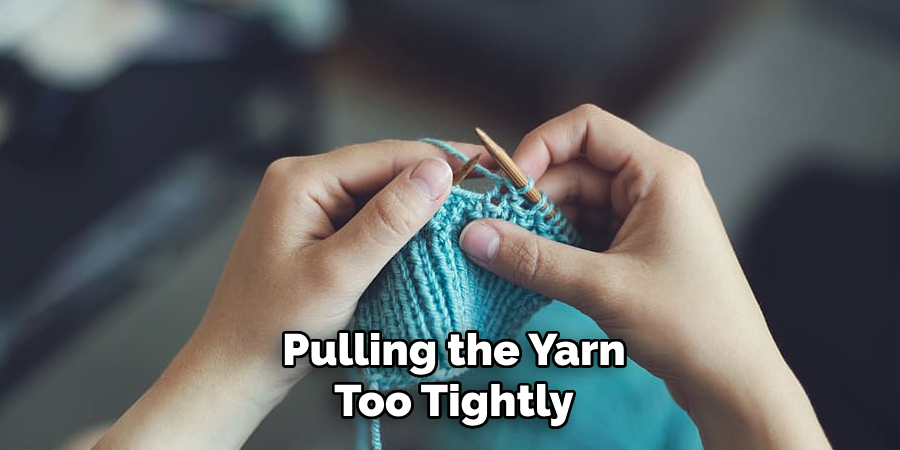
It’s natural to want your stitches to be neat and tight, but pulling the yarn too tightly can actually cause more harm than good. Tight stitches not only make it difficult to work with the hook, but they can also result in a finished project that is stiff and inflexible. Remember to keep your tension relaxed and consistent for the best results.
3. Using the Wrong Hook Size
Using the correct hook size is crucial for achieving the desired gauge and appearance of your project. If you use a larger hook than recommended, your stitches will be looser and your project will turn out bigger than intended. On the other hand, using a smaller hook will result in tighter stitches and a smaller final product.
4. Not Counting Stitches
Counting your stitches is an essential part of crocheting. Skipping or adding too many stitches can throw off the pattern and cause frustration when trying to fix mistakes later on. It’s important to double check your stitch count after each row or round to ensure accuracy.
5. Not Using the Right Type of Yarn
Just like with hook size, choosing the right type of yarn is crucial for a successful project. Different types of yarn have different weights and textures, which can greatly affect the final appearance and drape of your work. Make sure to use the yarn recommended in the pattern or choose one with similar characteristics.
6. Not Taking Breaks
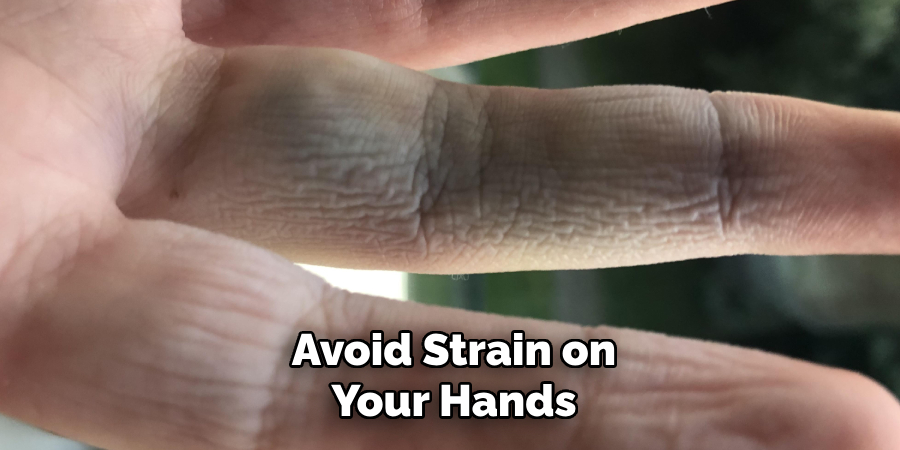
Crocheting can be a relaxing and enjoyable hobby, but it’s important to take breaks to avoid strain on your hands, wrists, and eyes. Crocheting for long periods of time without breaks can lead to fatigue and even injury. Remember to take breaks and stretch your hands and wrists to prevent any discomfort or pain.
Troubleshooting Tips for Yarn Over
Now that we’ve identified some of the common issues faced while crocheting yarn over, here are some tips to help you troubleshoot and overcome them.
- Relax Your Grip: If you find yourself creating tight loops with yarn over, try to relax your grip on the hook and yarn. This will allow the yarn to flow more smoothly and prevent hand fatigue.
- Use Stitch Markers: To avoid skipping stitches when crocheting YO, use stitch markers to mark each completed stitch. This will help you keep track of your stitches and prevent any gaps or holes in your project.
- Practice Even Tension: To achieve even tension while crocheting YO, practice with an even amount of pressure on the yarn as you pull it through the loops. You can also try using a larger hook to help loosen up your stitches.
- Double-check Your Counts: Always double-check your stitch counts as you go to ensure that you haven’t skipped or added any stitches. This will help you catch any mistakes early on and make corrections before they become a bigger issue.
Crocheting with yarn over may present some challenges, but with these troubleshooting tips, you can overcome them and create beautiful projects. Remember to relax your grip, use stitch markers, practice even tension, and double-check your counts to avoid any common issues.
Applications of Yarn Over
Yarn over is a commonly used technique in knitting and crochet, where the yarn is brought to the front of the work before creating a new stitch. This creates an extra loop on the needle, resulting in an increase in stitches. While this may seem like a simple technique, it has many practical applications that make it an essential skill for any knitter or crocheter.
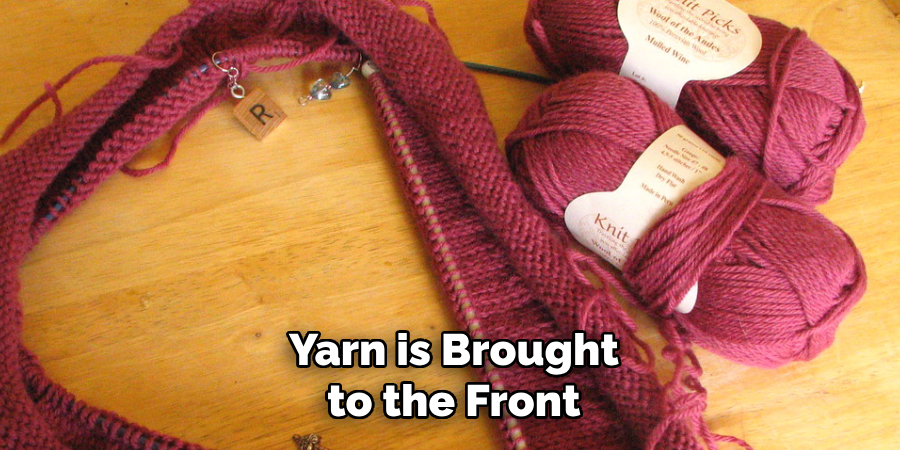
1. Increases and Decorative Stitches
The most common use of yarn over is in creating increases within a project. By adding an extra loop, the fabric becomes larger, allowing for shaping and design elements. Depending on the placement of the yarn over, different decorative stitches can be created such as eyelets or lace patterns.
2. Buttonholes and Borders
Yarn overs are also used in creating buttonholes and borders. By strategically placing yarn overs, a hole can be created to insert a button through or to create a decorative edge on a garment.
3. Creating Spaces
Yarn overs can also be utilized to create spaces within the fabric. This is especially useful when creating lace or openwork designs, as it allows for air flow and adds texture to the project.
4. Decreasing Techniques
While yarn over is most commonly used for increases, it can also be used in decreasing techniques. By passing a stitch over the extra loop created by a yarn over, stitches can be decreased, creating shaping within the fabric.
5. Joining Techniques
Yarn overs are also useful in joining different sections or pieces of a project together. By inserting the needle through a yarn over on both pieces, they can be joined seamlessly and securely.
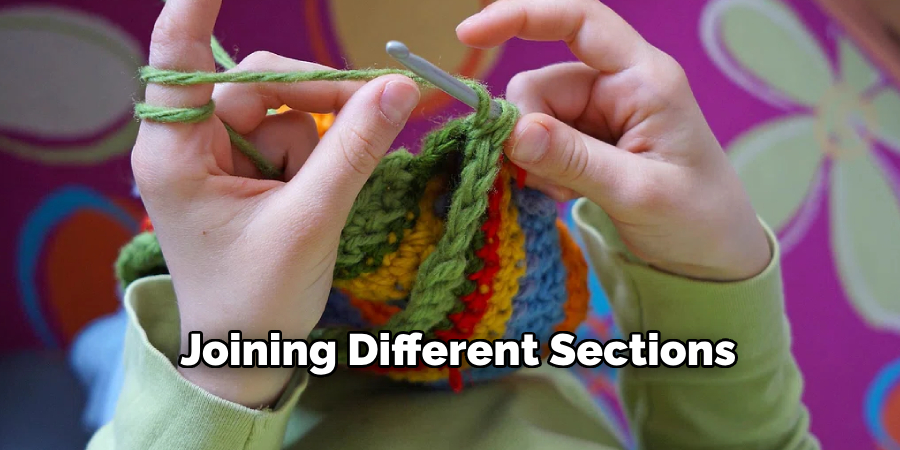
6. Fixing Mistakes
One of the great things about yarn overs is that they can easily be undone if a mistake is made. By simply dropping the extra loop off the needle, the stitch can be corrected without having to unravel rows of work.
Yarn over may seem like a simple technique, but its applications in knitting and crochet are vast. Whether used for shaping, decorative elements, or fixing mistakes, mastering the yarn over technique is essential for any fiber artist.
Advanced Techniques for Crocheting Yarn Over
While yarn over is a basic technique in crochet, there are several advanced techniques that can be used to create unique and intricate designs. Some of these techniques include:
1. Yarn Under
Similar to yarn over, this technique involves bringing the yarn under the hook before creating a new stitch. This creates a different type of loop on the hook, resulting in a twisted or crossed stitch.
2. Extended Yarn Overs
Extended yarn overs involve adding extra chains to the yarn over, creating a longer loop on the hook. This can be useful when creating taller stitches or for lace patterns.
3. Double Yarn Over
Instead of just adding one extra loop, double yarn over involves wrapping the working yarn around the needle twice before creating a new stitch. This creates a larger and more decorative hole in the fabric.
4. Spike Stitches
Spike stitches involve working a yarn over around several rows below the current row, creating a long loop that extends out of the fabric. This can add texture and depth to a project.
5. Combination Techniques
Experienced crocheters often combine different types of yarn overs to create complex designs. By incorporating advanced techniques, projects can be elevated and become more visually appealing.
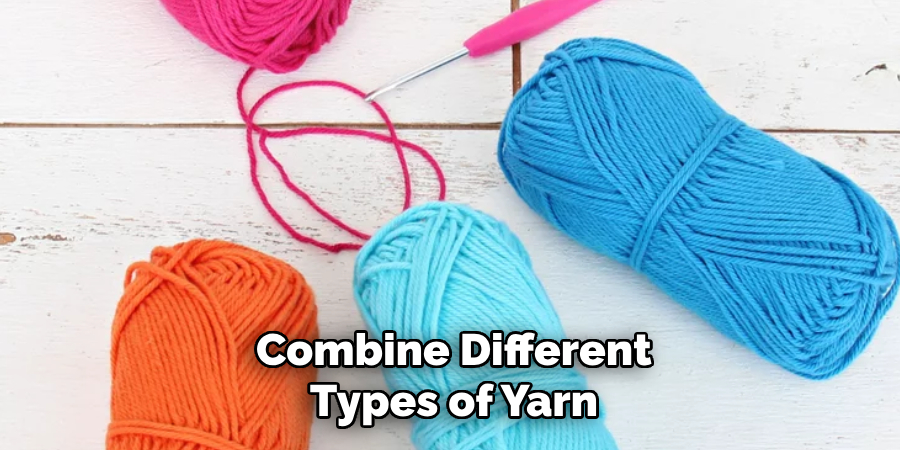
With these advanced techniques, crocheters can take their yarn over skills to the next level and create intricate and unique designs in their projects. By experimenting with different combinations and variations, the possibilities are endless.
Yarn Over in Garments
The yarn over technique is an important skill to master in garment making. It involves creating an extra loop on the knitting needle, which creates a decorative hole or eyelet in the fabric. This technique is often used in lace knitting, but can also be incorporated into other types of garments for added texture and design elements.
To execute a yarn over, simply wrap the working yarn over the needle as if you were knitting a regular stitch. This creates an extra loop on the right needle, which is then worked like any other stitch in the pattern.
One of the benefits of using yarn overs in garments is that they can easily be customized to create different sizes and shapes. By increasing or decreasing the number of yarn overs and stitches around them, you can create larger or smaller eyelets, as well as different shapes such as diamonds, circles, and squares.
Yarn overs are also a great way to add visual interest to your garment. By combining different yarn weights and textures, you can create unique patterns and designs that stand out. Yarn overs can also be used strategically to draw attention to certain areas of the garment, such as a neckline or hemline.
Pattern Modification and Customization for Yarn Over
Yarn over is a technique commonly used in knitting and crocheting. It involves creating an extra loop of yarn on the needle or hook, which adds height and creates an eyelet hole in the fabric. This versatile technique can be modified and customized to create interesting patterns and textures in your projects.
One way to modify yarn overs is by changing the number of wraps you make with the yarn around the needle or hook. This can be done by wrapping the yarn two or more times for a larger eyelet hole, or by making smaller wraps for a tighter and more delicate look. Experimenting with different wrap sizes can give your project a unique and personalized touch.
Another way to customize yarn overs is by incorporating them into specific stitch patterns. For example, you can combine yarn overs with decreases to create lace-like designs in your knitting or crochet. You can also alternate between regular stitches and yarn overs to add texture and dimension to your fabric.
In addition to modifying and customizing individual yarn overs, you can also play with the spacing between them. By increasing or decreasing the distance between yarn overs, you can change the density of the eyelets and create patterns with varying levels of openness. This technique is particularly useful for creating lace projects, as it allows you to control the amount of airiness in your fabric.
Conclusion
The main disadvantage of crocheting yarn over is that it can be time consuming and tedious, especially for beginners. It requires patience and practice to perfect the technique, which may not be appealing to everyone. Moreover, using a large amount of yarn in each stitch can result in a bulky and heavy finished product. This may not be desirable for clothing items or other projects where weight and drape are important factors.
In conclusion, crocheting yarn over is a versatile technique that can be used in various patterns and projects. It may seem intimidating at first, but with practice and patience, anyone can master this skill. One of the great benefits of crocheting yarn over is that it allows for more intricate designs and textures in your crochet work.
Whether you’re creating lacy doilies or thick and cozy blankets, yarn over stitches can add an extra dimension to your crochet projects. I hope reading this post has helped you learn how to crochet yarn over. Make sure the safety precautions are carried out in the order listed.

